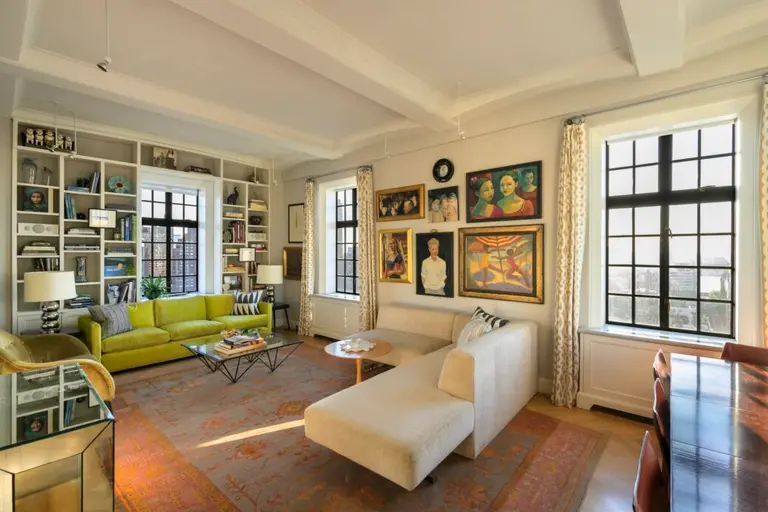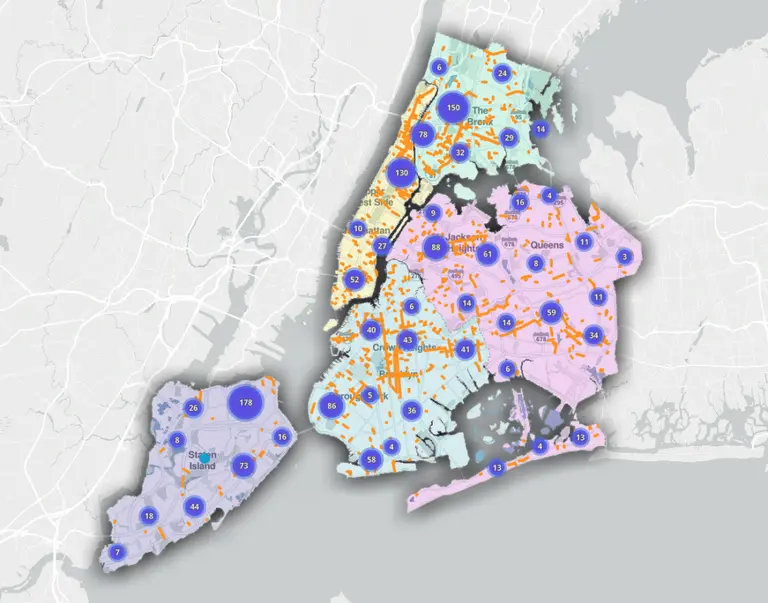Hope Street, Love Lane, and more: The stories behind NYC’s most optimistic street names

Photo via Flickr cc
Short on hope? Wondering where to find love? Craving the promise of Utopia? If you are, you’re likely not alone. What you may not realize is that a few New Yorkers have these things on the street where they live, or at least on the street signs where they live. While most New Yorkers, especially Manhattanites, are relegated to living on numbered streets and avenues, in a few city neighborhoods, streets do have names and just a few of these streets–Hope Street, Love Lane, Futurity Place, and more–are especially uplifting.
Five positively optimistic addresses in New York City
 Photo via Wiki Commons
Photo via Wiki Commons
1. Hope Street, Brooklyn
Conveniently located just a few blocks from the Metropolitan Avenue and Lorimer Street MTA stops, Hope is a short street that runs between Roebling and Union in East Williamsburg. While only four blocks long, Hope Street continues to attract a lot of attention (see 6sqft’s profile on Hope Street from 2014). If you’re looking to live on Hope, however, you may be in luck since among the people flocking to hope are developers who have recently turned the once low-rise street into a series of multiunit buildings, including 55 Hope and 140 Hope.
2. Utopian Parkway, Queens
If you’re looking for more than hope, aim for utopian—as in Utopian Parkway in Utopia, Queens. The parkway’s appealing name dates back to the early 20th century when the Utopia Land Company set out to build a cooperative community in Queens for Jewish families living in overcrowded tenements on the Lower East Side. Though the company purchased 50 acres of farmland, the community never was built since the Utopia Land Company went bankrupt before they could start building homes. In fact, Utopia wouldn’t see its first residents for another 35 years when Gross-Morton and several other developers moved into the area. According to the New York Times, back in 1940, Utopia was also home to some pretty utopian prices—homes ranged from $6,490 for a two-bedroom to $8,690 for a three-bedroom plus den. While purchasing a home in Utopia isn’t what it was back in 1940, rental prices in the area still offer a lot of value. One can still rent a four-bedroom home in Utopia for under $3,000, which is a bargain one would be hard pressed to find in nearly any other New York City neighborhood.
3. Futurity Place, Staten Island
Don’t want to move to Utopia, Queens, but still looking for a place where better things loom on the horizon? If so, consider moving to Futurity Place on Staten Island. If you’re expecting Futurity Place, which is a short street running from Arthur Kill Road to Token Street, to look like the future, you may be disappointed. Most of the homes here were built in the 1970s and ’80s. But if you desire a future that reflects your suburban past, you will find a lot of bargains on Futurity Place. As of early 2019, active listings for three- to four-bedroom homes were in the $450,000 to $650,000 range.
4. Love Lane, Brooklyn
Ever dreamt of mailing your Valentine’s Day cards from an address on Love Lane? In Brooklyn Heights, you can actually do this—that is, if you can find a place to live on Love Lane and afford the neighborhoods prices (in 2017, this townhouse was listed at $10,000 per month). Over at Love Lane Mews, two-bedroom condos start in the 2.2. million range. While Love Lane might not look like a particularly romantic spot now, it apparently once was. An 1894 article in the New York Times asked around and a few “old timers” confirmed that “there was once a cool and shady path leading down ‘Lover’s Lane,’ where the plump, rosy-cheeked Dutch maidens once, with their sweethearts, meandered on Summer evenings.”
5. Pineapple Street, Brooklyn
Just two blocks away from Love Lane, you’ll find yourself in the “fruit streets” of Brooklyn. If you’re walking north from Love, you’ll hit Pineapple first. While there may be nothing particularly positive about pineapples, any mail originating from Pineapple Street is bound to put a smile on most people’s faces. According to NYC Parks, an early resident, Lady Middagh, didn’t like the fact that the local streets had been named after aristocratic families and took it upon herself to replace the signs with her own fruit signs. In time, the city adopted Lady’s Middaugh’s new street name choices. If you’re hoping to live on Pineapple Street, it is home to a few moderately priced coops, including Hamilton House, a pre-war cooperative located at 55 Pineapple. It is also home to several elegant townhomes, some dating back to the early 19th century.
And if you’ve spent any time in the south, especially in Charleston, you’ll know very well that the pineapple is a symbol of hospitality. In Colonial times, if one was able to have a pineapple–then a rare fruit only found in the Caribbean–it meant they were wealthy and of high society. Moreover, if they chose to share their pineapple with you, you were quite the esteemed guest. And thus, the fruit became synonymous with hospitality and eventually was included in southern architecture, in wrought iron fences, moldings, etc.
Petition for a co-named street instead
If you want a positively optimistic address but don’t want to move, there is one more possibility you might want to consider—petition for a street name change. But don’t assume you can do as Lady Middagh did and take matters into your own hands. In fact, in modern-day New York, Lady Middagh would likely find herself slapped with a vandalism charge, because changing the name of a street in New York City is now an onerous process that requires multiple levels of approval.
First, you can’t exactly change the name of your street but only request a “co-name.” Also, don’t expect to find much help on the City of New York’s website, which offers no guidance on the process and only states that you should contact your local community board for information. In fact, even before you even contact your community board, there are several other steps you should undertake.
To begin, if you want to have your street “co-named”—for example, you currently live on a stretch of East 77th Street between Second and Third Avenue, but want to rename this stretch of street “Positivity Way”—you’ll need 75 percent of the residents and businesses located on this block to sign a petition endorsing the name change. Next, you’ll need to bring your petition to your community board. If they agree that this stretch should be co-named “Positivity Way,” the petition will travel to New York City Council. Then, the Council will conduct a background check—for example, to ensure there is nothing controversial about your proposed request for this stretch of street to be co-named “Positivity Way.” Finally, there is one more hurdle—technically, the Mayor has the right to veto any co-naming request. If the Mayor doesn’t veto, however, you might soon have a much more positive street name to put on your letterhead and on your corner street sign.
RELATED:






























